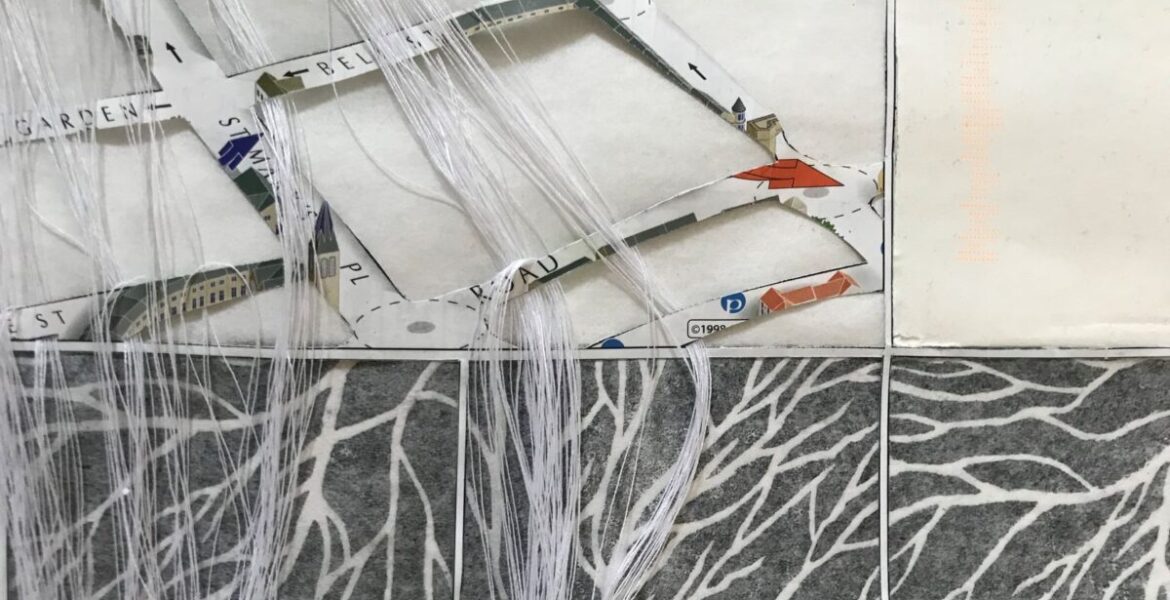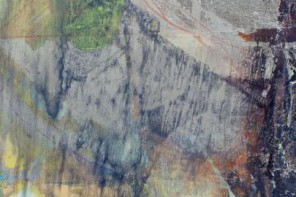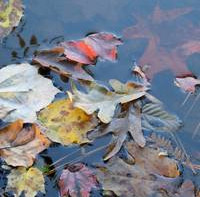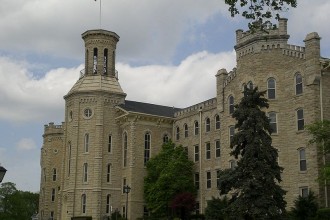For our series of artist reflections connected to the Transept Interface exhibition, Melody Bellefeuille-Frost describes the creative process behind her collage This is Where We Live Now.
And are we not at home in Thee,
And all this world a visioned show;
That knowing what Abroad is, we
What Home is, too, may know?
- George MacDonald, ‘A Prayer for the Past’[1]
Journeys and Materials
I like making collages about journeys. But not just about journeys, really. It’s more like I make art that reflects a journey or is a journey.
My materials point to this: maps from tourist information kiosks, newspapers from airports, a page from a used book that mentions ‘havens’ or ‘venturing.’ These are things I pick up along my way. Sometimes I bring in seemingly unrelated images from magazines, which I cut into roughly-ordered stacks in my studio. I’ve used glossy images of outer space and panoramic shots of Canadian landscapes. Senses of otherworldliness and alienation, captured in photographs by NASA, can be as familiar as scenes from Ontario (water, rocks, trees, repeat). I like to juxtapose the technicality of astronomical graphs with the domesticity of thread or dirt. Sometimes these elements are symbolic. Sometimes they’re aesthetic choices. Collages let you get away with all sorts of things.
When I moved to Scotland last September, two shoeboxes of materials moved with me. It’s surprising how heavy paper, X-Acto knives, glue, paint, and charcoal can be when you’ve also got to pack books and clothes. While making myself at home here, I collected scraps from everyday mail and maps of the area. A stamped envelope, a route marked in blue pen—each crease and smudge indicates that these things travelled too.
Maps, Mycelia, and Mushrooms
You might wonder, ‘‘Okay, I get the maps… but what about the mushrooms?’’ And I’ll reply rather enthusiastically, ‘‘Because I saw them everywhere!’’ Mushrooms in the forest. Mushrooms in my Tesco order. Mushrooms in that Fantastic Fungi documentary.[2] Mushrooms in other Transept members’ art.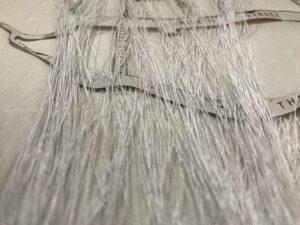
There’s a type of map underground. It’s a shadow network made of mycelia, the roots of fungi. Mycelia look like delicate strands (called hyphae) branching through the soil, and if you want to find them just look for mushrooms—they’re the fungal fruit. A mass of mycelium resembles the interweaving roads and paths in the surface-level maps I work with. Mushrooms resemble the buildings, monuments, and other attractions that roads and paths lead to. Despite differences in size and function, both mycelia and maps cover vast regions and are characteristically interconnected. These visible and invisible networks facilitate the interfacing of various organisms.
So, I explored the parallels between maps and mycelia in my art. My Interface exhibition piece, This Is Where We Live Now (Parts I & II), is like a milestone or a mushroom that grew from the creative process.
Where Are We?
We frequently use maps to show us where we’re going, but to use a map effectively we need to know where we are first. We may even need to know how we got there. As I played with the ideas of maps and mycelia in my collage, I saw how that creative moment in my life connected to memory and possibility.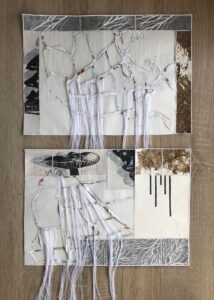
When I was little, my mum enjoyed wandering around the backyard looking at all the different types of mushrooms that sprang up after rain. When white, yellow, orange, and brown caps dotted the grass, she slipped on her boots for an expedition. One day there was a fairy ring. Another day there was a slimy, sickly blue mushroom. In the autumn, it was time for puffballs that burst into smokey spores when you poked them. My mum taught me how to gently place a mushroom cap gills-down on black construction paper and wait several hours until it left a pale print behind. It always felt a little magical, like pixie dust.
Nowadays, my curiosity about mushrooms has me thinking about foraging. As we were settling into Scotland, my husband and I stumbled upon mushroom foragers working off a trail in Tentsmuir Forest. We saw their faces turned to the ground, one hand parting foliage while the other held a wicker basket piled with treasure. Foraging acquaints you not only with local people but with localized knowledge; it may never quite translate to another context. What an intriguing way to get to know the humans and fungi that call Fife home. Maybe we’ll join them.
My Interface exhibition piece, This Is Where We Live Now (Parts I & II), is like a milestone or a mushroom that grew from the creative process.
The themes tied to This Is Where We Live Now (Parts I & II) remind me of the miniature worlds that my mum introduced me to and the matrix that surrounds me in St Andrews. I’m inclined to consider the mushrooms as I roam about with neighbours, sensing nature cycle through decay and growth again. Maps and mycelia show us the complexity of the world we share and the connectivity we experience as we journey through it. Perhaps they also hint that there’s more to come, beyond this spring.
View There is Where We Live Now and the rest of the Transept Interface exhibition here.
[1] George MacDonald, ‘A Prayer for the Past,’ Poems (London: Longman, Brown, Green, Longmans, and Roberts, 1857), 256.
[2] Louie Schwartzberg, Fantastic Fungi (Los Angeles, CA: Moving Art Studio and Reconsider, 2019), Netflix, https://www.netflix.com/title/81183477.

